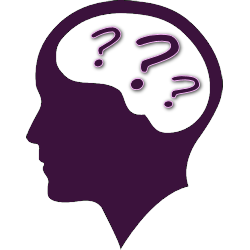Dealing with Students with Seizure Disorders
Lesson Plans > General > Learning DisabilitiesDealing with Students with Seizure Disorders

Dealing with Students with Seizure Disorders in the Classroom
"What to do if a Child has a Seizure"
The information provided within this article was obtained from the National Institute for Neurological Disorders and Stroke & Epilepsy Ontario. It should help any classroom teacher be aware of the types of seizure disorders and what to do in case a child has a seizure in the classroom.
There are 2 main types of Seizures: Primary Generalized Seizures and Partial Seizures. Primary Generalized seizures are generally associated with hereditary issues. They can begin with an electrical discharge in a widespread manner affecting both sides of the brain. Partial Seizures are more often associated with head trauma, brain infections, strokes, or tumors. In a Partial Seizure usually only one part of the brain is affected.
Some of the seizures associated with Primary Generalized Seizures are:
– Absence Seizures (Same as petit mal)
– Atypical Seizures
– Myoclonic Seizures
– Atonic Seizures
– Tonic Seizures
– Clonic Seizures
– Tonic-Clonic Seizures (Same as Grand Mal)
Some of the seizures associated with Partial Seizures are:
– Simple Partial Seizures
– Complex Partial Seizures
– Secondary Generalized Seizures
There are several important steps and important things to do if a child begins or appears to be having a seizure in the classroom:
• Roll the person on his or her side to prevent choking on any fluids or vomit
• Cushion the person’s head
• Loosen any tight clothing around the neck
• Make sure the person’s airway is open (Only if not breathing tilt the person’s head back some and hold the jaw open)
• Do not restrict the person from moving unless they are in danger
• Do not put anything into the person’s mouth; not even fluids or medicine – this can cause choking and damage to the tongue, teeth, or jaw.
• Please Note: Contrary to popular believe People cannot swallow their tongues.
• Remove sharp or hard objects away from the person during the seizure
• Please Note: Note how long the seizure occurred and the symptoms exhibit so that you might tell medical personnel later
• Always stay with the person until the seizure has ended
It is always a good idea to call 911 or medical assistance in every seizure case, but there are a few instances when calling 911 is necessary:
• The person is pregnant or has diabetes
• The seizure happened in water
• The seizure lasted for more than 5 minutes
• The person did not start breathing or having trouble breathing
• Another seizure starts before the person has regained consciousness
• The person injures themselves during the seizure
• If you think this is the person’s first seizure or if you are not sure
After a seizure there are several things you can expect to happen. The person may be groggy or feel very tired. The person could be confused, disoriented, or even embarrassed. The person may also complain of a headache or soreness in other areas of their body. It is important to be patient with the person who has had a seizure. Assure the person that everything is alright and try to make them as comfortable as possible. It is important to also question the person about any thing that hurts them to make sure they did not injure themselves during the seizure.
There are also seizure types that are non-convulsive. These types of seizures are often hard to identify but it does not make them less serious. There are some characteristics that might help one identify a non-convulsive seizure. The person may walk aimlessly around the room. They may make odd gestures or mumble to themselves. Often they may perform meaningless gestures in a repetitive manner. It is possible they may just stare blankly into space and be completely non-responsive to outside stimulus or verbal commands.
If a student is suspected of having a non-convulsive seizure there are several things the teacher or person present should do. Remove dangerous objects from in front of the person walking and do not try to stop them from walking unless they are in danger. Do not shake or shout at the person. Always stay with a person you suspect of having a seizure until the seizure has ended and the person is again perfectly alert. Regardless remember that the person having the seizure can not control this behavior and patience is always needed.
A seizure can be very frightening for the person having the seizure, as well as for their classmates and the teachers. It is a disorder that is controlled very well usually with medication, but a seizure can occur at any time even if the child is on medication. It is important to know what to do and what not to do for a student having a seizure. Being prepared is the best way to minimize injury, fear, and harm during a seizure episode.

